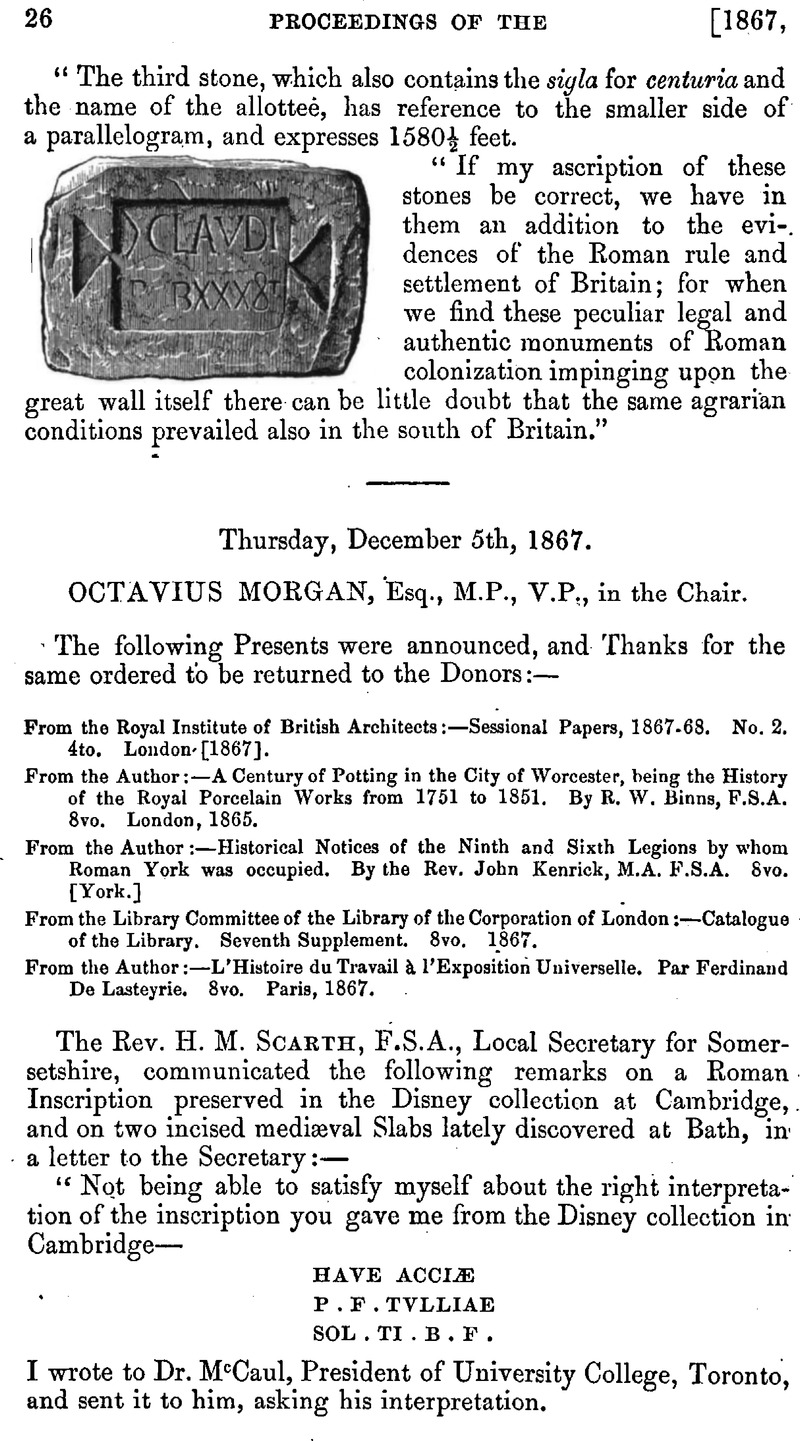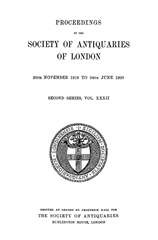No CrossRef data available.
Article contents
Thursday, December 5th, 1867
Published online by Cambridge University Press: 10 May 2010
Abstract

- Type
- Proceedings
- Information
- Copyright
- Copyright © The Society of Antiquaries of London 1870
References
* The oil-paint priming with heat gave off much thick blue smoke and empyreumatic smell of linseed oil, but the distemper ground did not. The white residue in both cases was soluble with effervescence in nitric acid ; ammonia added threw down nothing; caustic potash— white, insoluble in excess ; sulphohydride of ammonia— nothing ; sulphuric acid (in a weak solution) — nothing ; oxalate of ammonia—white. The purple oil-paint digested in hydrochloric acid communicated a deep yellow tinge and partially dissolved ; on adding potash in excess and filtering, a colourless liquid went through; chromate of potash added threw down yellow ; sulphohydride of ammonia—black. Ammonia added to the hydrochloric acid solution, either of the oil, or of the distemper purple, threw down gelatinous brownish red ; potash—the same ; ferrocyanide of potassium—blue. The blue colour digested in hydrochloric acid disappeared ; neither ammonia, potash, sulphohydride of ammonia nor ferrocyanide of potassium added—gave any precipitate ; digested in weak caustic potash, —gave a greenish solution, becoming yellowish brown and depositing floceuli ; acids added made the tint lighter, but without changing it. The red became black by the application of sulphureted hydrogen ; digested in hydrochloric acid it partially dissolved ; ammonia added threw down white, not re-dissolved ; potash—white, redissolved ; sulphohydride of ammonia—black ; chromate of potash—yellow. The white and the yellow, treated with hydrochloric acid, gave respectively the same reactions as the white residue left after incinerating the primings and the purple, as above described. The black heated to redness in the open air—disappeared. A drop of hydrochloric acid added to any of the colours caused effervescence.


